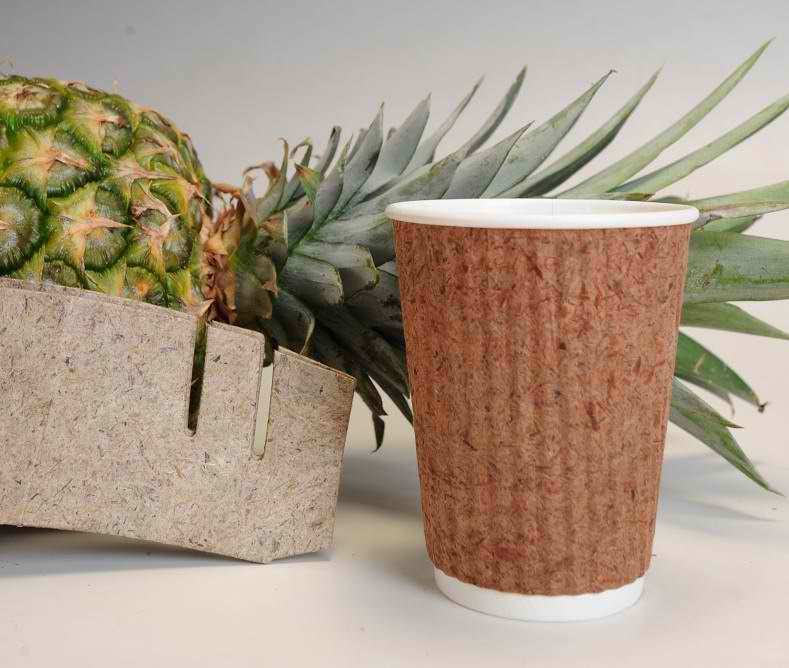Pineapples are huge local commodities with plantations found all over the country.
Over 706,046 metric tons of pineapples were produced in the fourth quarter of 2018, and with those millions of pineapples comes millions of disposed pineapple leaves. Rather than leaving them to rot, local innovators have found another purpose for them: paper.
The Design Center of the Philippines under the Department of Trade and Industry has recently launched a sustainable innovation that takes disposed pineapple leaves and recycles them into paper called “pinyapel.” The best part is that the material can be used for packaging, particularly in the foodservice industry.

Besides reducing the amount of agricultural waste produced, the project has also become a means of income for farmers. “For every one cycle of drying, collecting, and bagging of five tons of pineapple leaves, it adds an approximately P1,753 to the weekly income of every seven pineapple laborers,” says Aleli Mae Uy, chief operating officer of Nature’s Fresh Pineapples, pinyapel’s supplier of pineapple leaves.
On the manufacturing end of the project is CDO Handmade Paper, the paper sheet processor that partnered with Design Center. Lolito Cabanlet, general manager of CDO Handmade Paper, notes how timely pinyapel’s launch is given the growing discussion on ecological consciousness and sustainability. The economic opportunities it presents also can’t be ignored.
“For every one cycle of drying, collecting, and bagging of five tons of pineapple leaves, it adds an approximately P1,753 to the weekly income of every seven pineapple laborers,” says Aleli Mae Uy, chief operating officer of Nature’s Fresh Pineapples, pinyapel’s supplier of pineapple leaves.
“Aside from the local market, there is a huge demand for a food-safe pineapple paper itself from other countries, thus, export opportunity for it is bountiful,” she adds.
Instead of importing packaging material, pinyapel is both locally sourced and locally upcycled, with products ranging from gift bags to paper cup sleeves. In a collaborative effort, Ideatechs Packaging takes the paper produced by CDO Handmade Paper and repurposes it into packaging.
“We find it fulfilling that this collaboration has allowed us to support sustainability through the upcycling of waste pineapple leaves, and the local pineapple industry, especially those in the SME sector,” says Helen Lising, general manager of Ideatechs.
The innovation of pinyapel can be attributed to the Design Center’s materials research and development program, which is tasked with designing sustainable solutions that can boost the local economy.
“Exploring different materials and experimenting with the strength, assets, and potential of those material, we intend to produce uniquely Filipino yet globally relevant material solutions that can improve our country’s competitiveness in the global market,” says Rita O. Matute, executive director of the Design Center of the Philippines.
At the moment, the Design Center team is working on further research and development initiatives to unlock what else pinyapel can offer.